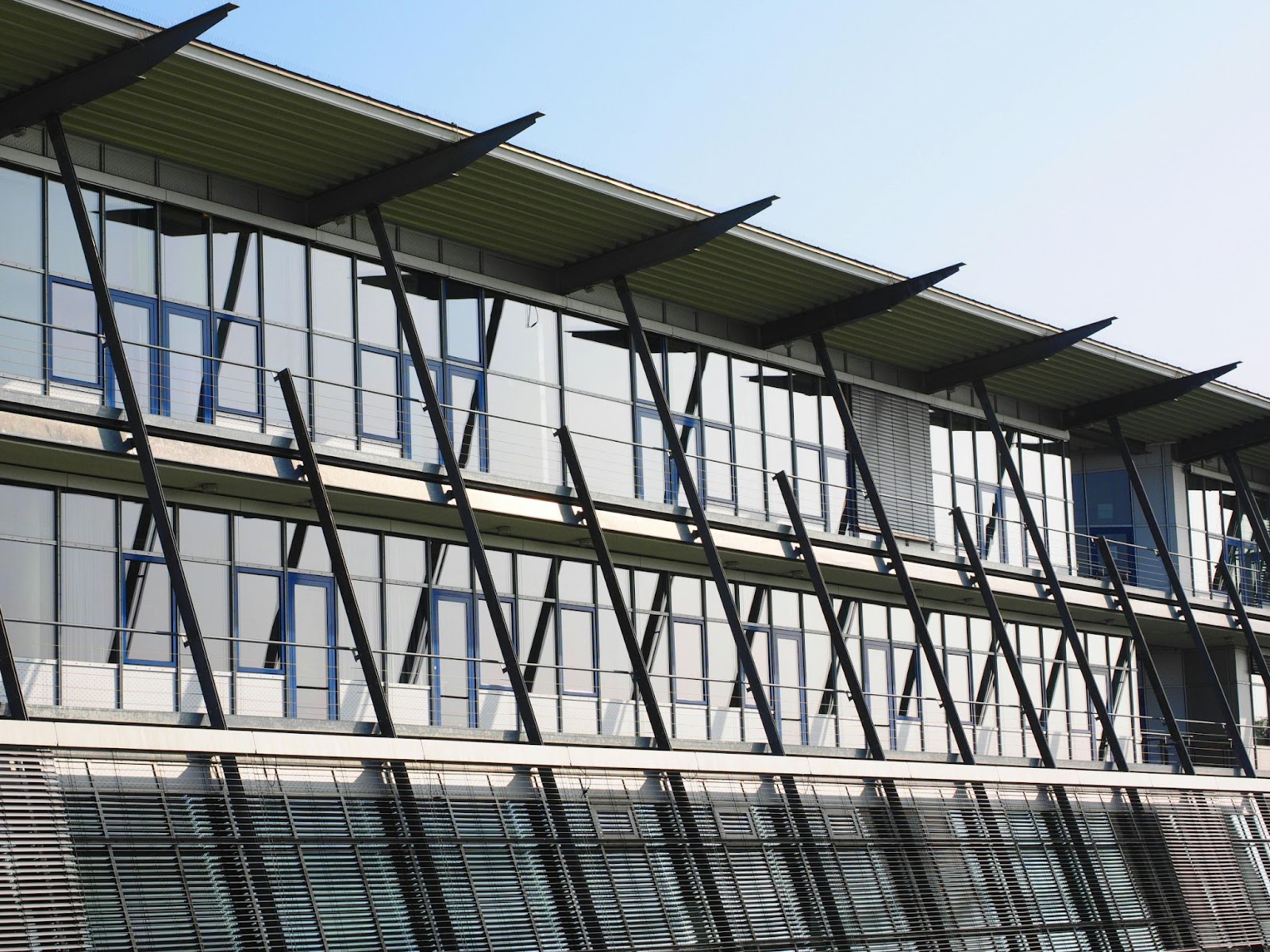X-Ray Vision: Why Is Lead Used For Radiation Protection?

Explore the multifaceted advantages of lead and understand why is lead used for radiation protection across a spectrum of industries.
Envision possesses the ability to peer past solid objects and reveal the mysteries concealed beneath them. We must safeguard ourselves against the invisible, dangerous forces of radiation in the actual world, even though X-ray vision is still the stuff of comic book dreams. Protecting oneself against radiation is essential for maintaining health and wellbeing. Lead is a crucial component that is essential to this mission. But of all materials, why lead? In this succinct investigation, we’ll expose the extraordinary qualities of lead and learn why radiation-protective lead glass shielding plays such a major role in protecting humans against the potent, invisible risks of radiation.
Why Is Radiation Protection Necessary?
To protect people and the environment from the damaging effects of ionizing radiation, radiation protection is crucial. Such radiation exposure can disrupt ecosystems, induce cancer, and damage cells. will examine the significance of radiation protection, including its need, possible risks, and ways to reduce hazards.
Health Risks Mitigation
Radiation exposure from sources such as medical X-rays, nuclear reactors, and ambient natural radiation can be harmful to one’s health. By lowering radiation exposures through shielding and safety precautions, radiation protection lessens these dangers. Lead aprons, for example, protect people during medical imaging, showing how good protection measures can dramatically lessen health hazards.
Medical And Diagnostic Imaging
Diagnostic and medical imaging methods such as CT scans and X-rays are crucial for making medical diagnoses. Healthcare professionals use lead shielding and rigorous standards to emphasize the safety of their patients and employees. Even though these methods provide important insights, reducing radiation exposure is essential to long-term health protection.
Nuclear Energy And Industrial Applications
Industrial uses for radiation and nuclear energy include the production of electricity and materials. To protect workers and the public, strict safety laws and protective measures are implemented in these areas. Historical events such as the Fukushima and Chernobyl catastrophes highlight how important it is for nuclear and industrial sites to have strong radiation shielding.
Environmental Protection
Because of radioactive contamination and inappropriate waste disposal, radiation can disrupt ecosystems and cause long-term environmental impacts. To stop these effects, radiation protection techniques, including waste management and containment buildings, are used. Measures to lessen environmental harm, such as the Chernobyl exclusion zone, highlight how crucial radiation protection is to the preservation of our world.
Nuclear Safety
The prevention of accidents and radiation leakage in nuclear facilities is a crucial aspect of nuclear safety, as it safeguards both the environment and public health. To guarantee compliance, regulatory bodies and international standards, such as the IAEA, establish regulations and carry out inspections. The redundant cooling systems and containment structures that are a part of their safety measures show how dedicated nuclear power facilities are to preventing catastrophic catastrophes.
Radiation Therapy
One essential cancer treatment that targets and kills cancer cells is radiation therapy. Exacting equipment, shielding, and stringent regulations all work to ensure the safety of patients and staff. Success stories demonstrate its efficacy, such as higher survival rates. The careful balancing of treatment efficacy and safety demonstrates how important radiation therapy is in the care of cancer patients.
Occupational Safety
In businesses where workers are exposed to radiation, occupational safety is critical to preventing health hazards. Strict regulations, required training, and specialized tools like shielding and dosimeters are examples of safety precautions. Case studies from industrial radiography, radiology departments, and nuclear power plants highlight the importance of these safety measures for protecting employees’ health and reducing radiation-related mishaps.
The Role Of Shielding Materials In Protection
Materials that act as shields against radiation are essential. They lessen exposure by blocking, dispersing, or absorbing radiation. There are many kinds of shielding materials, their efficacy, and their uses in various contexts against radiation.
Absorption Of Radiation
Shielding materials can take in ionizing radiation in a number of ways, including photoelectric absorption and Compton scattering. Lead is an excellent example of a substance with a high atomic number and density, which are important parameters influencing absorption. Applications of radiation absorption materials in the real world include lead aprons used in medical imaging and concrete used in nuclear reactors.
Scatter And Deflection
The rerouting of radiation after its interaction with shielding materials is known as radiation scatter and deflection. Shielding materials can control these processes, which reduces unintentional radiation exposure. Lead-lined doors and walls in radiology reduce dispersion, while containment tanks in nuclear plants reduce deflection, highlighting the significance of controlling these effects for safety.
Energy Deposition
Energy deposition results from shielding materials’ absorption of ionizing radiation. It is essential to comprehend this mechanism in order to guard against the negative consequences of radiation. Tungsten and other high-density materials can be used to deposit energy and are used in nuclear shielding and radiation therapy shields, where precise control over the absorption of energy is very important for safety.
Shielding Thickness
The term “shielding thickness” describes the depth of material needed to effectively block radiation. Various radiation types require different thicknesses; for example, lead shielding may require a higher thickness when exposed to gamma rays than when exposed to alpha particles. In order to ensure proper protection in a variety of radiation conditions, guidelines and charts are useful in determining optimum shielding thicknesses.
Selectivity
When choosing shielding materials, selectivity means choosing materials based on how well they block certain types of radiation or energy ranges. For example, boron is employed specifically to absorb heat neutrons in nuclear power plants. Lead is used in medical radiology as an X-ray blocker. This customized choice guarantees the best possible protection in a range of scenarios.
Minimizing Secondary Radiation
When primary radiation interacts with shielding materials, it produces reflected or scattered particles, which are known as secondary radiation. Materials with low atomic numbers and effective thickness are used to reduce secondary radiation. In medical imaging, accurate collimation and lead shielding keep dispersion to a minimum. In industry, confinement and low-Z materials stop secondary radiation from being released when it is not needed.
Why Is Lead Considered The Best Material For Radiation Protection?
Lead is widely recognized as the most superior radiation shielding material because of its unique blend of high atomic number and low cost. Examine the unique qualities of lead that make it the best material for radiation shielding, such as its longevity and great absorption capacity.
High Density
The high density of lead is essential for radiation shielding to work. The material’s dense atomic structure ensures that more ionizing radiation interacts with and absorbs by it, reducing radiation exposure. Lead offers better protection than lower-density materials like concrete because it reduces the amount of dangerous radiation that might seep in.
High Atomic Number (Z)
Because radiation and lead atoms are more likely to interact thanks to lead’s high atomic number (Z), it provides better radiation shielding. As a result, ionizing radiation is more attenuated and has a decreased ability to pass through materials. Conversely, because of their weaker connections, materials with lower atomic numbers, such as plastic or aluminum, are less effective at stopping radiation.
Self-Attenuation
Self-attenuation is the phenomenon of radiation absorbing by a shielding material before it reaches the covered area. Because of its high density and atomic number, lead consistently provides protection against self-attenuation. Conversely, less dense materials, such as wood, may raise issues with self-attenuation and jeopardize the effectiveness of the shield.
Ease Of Shaping
Lead is a very useful material for specialized shielding applications due to its malleability and simplicity of shape. It can be shaped into a variety of shapes to fit specific patients, such as lead aprons for medical X-ray protection. Lead can be precisely shaped to cover critical equipment in the nuclear sector, providing the best possible radiation protection.
Durability
Lead has a long chemical stability and strong structural stability, making it an excellent material for radiation shielding. Nuclear power plants have lead-lined containment structures that have kept their shielding integrity for decades. This shows that lead is still a good material for protecting against radiation over long periods of time in important situations.
Cost-Effectiveness
Even though lead is more expensive initially than certain other materials, it is nevertheless a cost-effective shielding material. It offers significant long-term savings due to its exceptional radiation attenuation capabilities and enduring durability. According to studies, lead is still a reasonably priced option for radiation shielding in a variety of industries because of its effectiveness and durability.
Regulatory Approval
Standards and regulatory approval are essential to guaranteeing the efficacy and safety of radiation protection. Because of lead’s demonstrated ability to shield, regulatory agencies such as the NRC and IAEA have accepted and acknowledged it. Because lead must adhere to strict certification requirements, it is guaranteed to fulfill the highest safety standards, making it a reliable and recommended option for radiation protection.
Secure Yourself With The Best Lead Shielding—Request A Quote!
Regulatory organizations like the NRC and the IAEA have accepted and acknowledged lead shielding as a reliable and effective method of radiation protection. By adhering to strict certification requirements, lead provides reliable radiation protection that is sure to fulfill the highest safety standards. It is an affordable option for industries looking for a secure and safe way to protect their environment from radiation. Secure your world with the best lead shielding—request a quote today!
Explore More News

Fire Rated Glass for Aircraft Interiors: Challenges and Solutions
Embark on a journey to elevate aviation safety to new heights with Liberty Shielding’s pioneering innovation – fire rated glass…

Fire Resistant Glass: Key Features and Applications in Manufacturing
Step into the realm where security harmonizes with innovation. Unveil the extraordinary attributes of our fire-resistant glass, meticulously crafted to…

Bullet-Proof Windows: Balancing Safety and Aesthetics
Step into the future of unparalleled security with Bullet-Proof Windows from Liberty Shielding. As the industry leader, we redefine safety…
